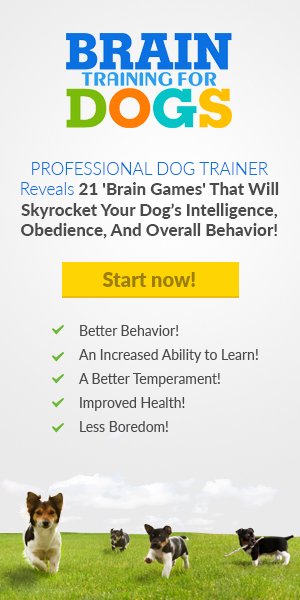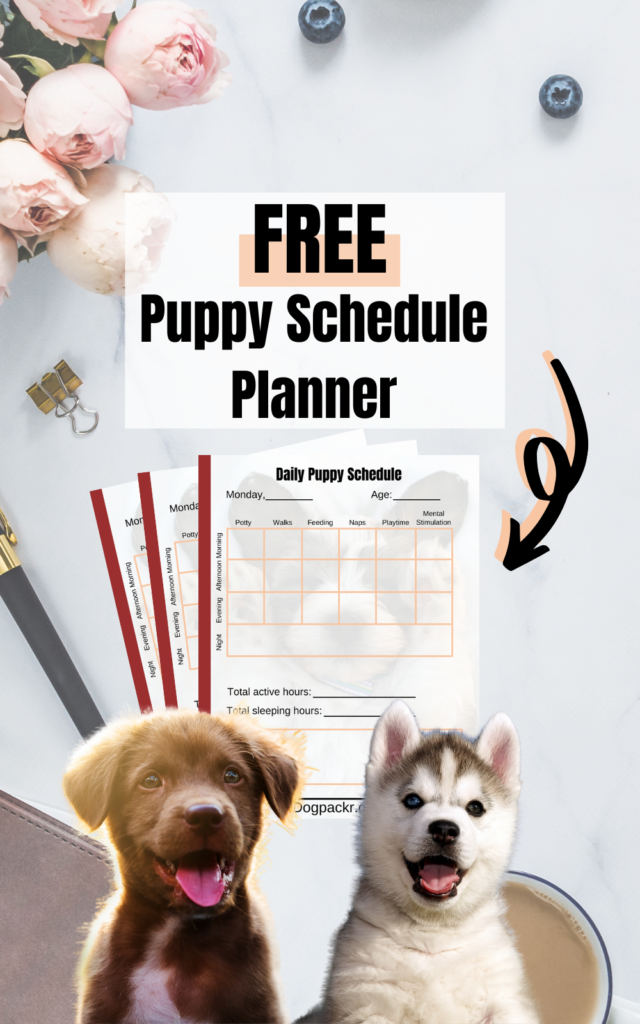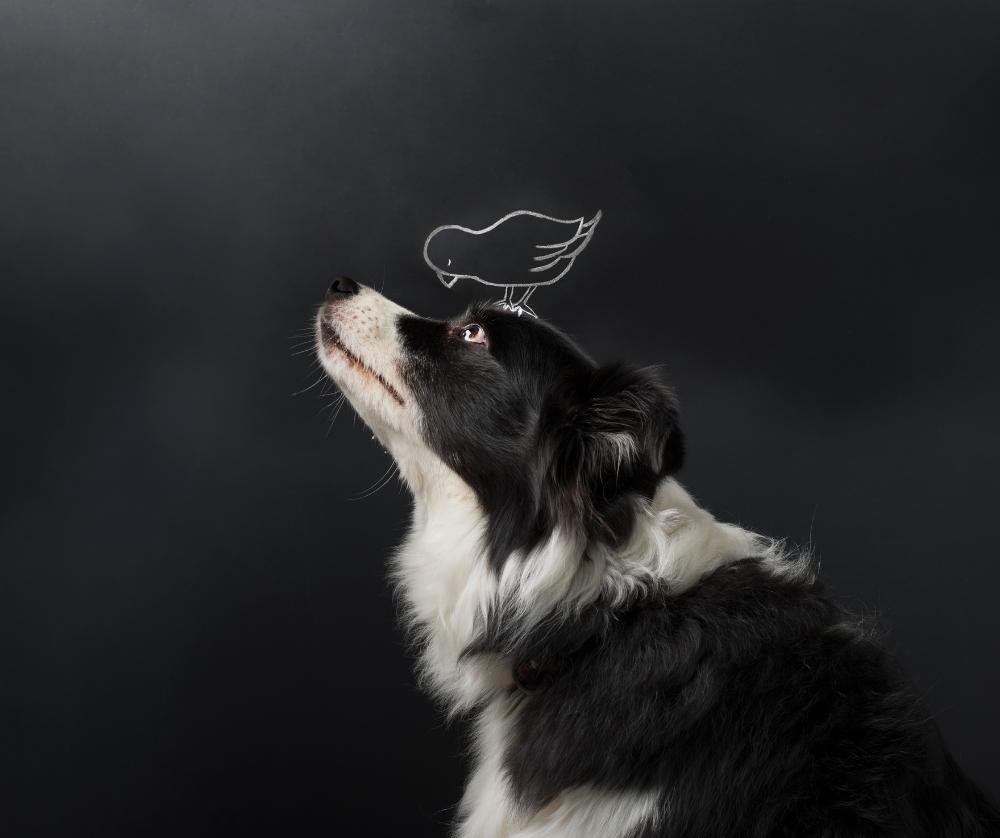Does your dog tend to get overstimulated when you go for a walk? Is he unable to calm down once you get back home?
There are a few reasons why this could be. This article has everything you need to know—and some helpful ways to keep your dog calm!
Table of Contents
Why is my dog overstimulated after a walk?
Taking a dog for a walk is a great way to get in some much-needed exercise. Walking is healthy for both of you!
But walking your dog can be difficult if your dog gets overstimulated by it. Good exercise should calm your dog down, not get him over excited!
There are several reasons why your dog could be getting too excited on his walks. Common causes are that he is easily excited in general or around other dogs, or that he’s feeling sensory overload. He might also simply not get enough exercise—and you might even have encouraged the behavior.
Once you’ve figured out why this happens, you can work with your dog to help keep him calm.
Before we get deeper into the reasons why your dog is getting overstimulated on a walk, here are some related articles:
- 7 Tips for Dog Tantrums on Walks
- How to Tell If Your Dog Is Tired of Walking
- Why Does My Dog Jump and Bite While Walking?
Not enough exercise
Your dog might get over excited on his walks if he’s not getting enough exercise generally.
It’s very important to make sure that your dog is getting a healthy amount of exercise every day.
Walks are great for that—but walking isn’t the only way that he should be exercising!
It’s particularly important for highly active dogs to get in enough exercise. Otherwise, you’ll likely find your dog acting out.
There are plenty of excellent ways you can ensure your dog is getting a healthy amount of exercise. Here are some articles to check out:
He’s frustrated
When dogs get frustrated, they tend to act in ways they know they shouldn’t.
So why exactly might your dog be getting frustrated on his walks? There are a few reasons that could be happening.
You might not be letting him sniff when he wants to, instead making him move right along. Dogs love sniffing, and there are so many interesting smells to check out when you’re outside.
It’s totally fine to let your dog sniff around while you’re out for a walk. In fact, it’s super healthy for him! If he gets his sniffing in, your dog is way less likely to stay overstimulated after your walk.
It should also help decrease feelings of frustration after walks.
Sensory overload
There are a lot of sights and smells outside. These can all be pretty exciting for your dog.
Unfortunately, for some dogs they can be a little too exciting. Your dog’s senses might start getting overwhelmed by all the things there are to check out.
When you get back home, he might still be riled up from everything he’s seen outside. It can take him a little while to calm back down.
If your dog tends to be prone to sensory overloading, this can be hard to manage. Finding ways to desensitize your dog can help.
He gets too excited about other dogs
Do you see a lot of other dogs when you go for walks? This might be what’s getting your dog so worked up on your walks.
So why is your dog so hyper around other dogs? There are several reasons why. Your dog could simply be a little too excited about making new friends, for one thing.
If your dog has had bad experiences with other dogs in the past, then the problem could be anxiety. It’s also possible that your dog was never properly socialized.
Helping your dog learn to stay calm around other dogs will help him be better behaved during and after walks.
Your dog gets overstimulated easily
Some dogs are simply more easily overstimulated than others.
If you have a high-arousal dog, that means that he tends to get overstimulated faster than other dogs. This can make it difficult to walk your dog and keep him calm once you come back home.
If you have a dog that naturally tends to be high-arousal, then it’s your job to know what his threshold is.
Understand what triggers your dog’s overstimulation and work with your dog to prevent it from happening.
You’ve encouraged your dog’s behavior
There are a lot of behaviors that your dog may have picked up that you’ve unwittingly encouraged.
Dogs respond best to positive reinforcement dog training. Positive reinforcement is more than just a treat and a “Good dog.”
When you give your dog attention, even if it’s negative attention, this can serve as reinforcement. So, if you’re shouting at your dog to calm down on a walk when he’s acting hyper, this could end up reinforcing the bad behavior.
In this case, your dog isn’t overstimulated by something that’s happening on the walk, but he’s acting out to get rewarded with attention!
Instead of giving your dog this reinforcement, ignore him when he shows bad behavior. When he acts calm on walks, reward him for this to encourage that behavior.
Related topic: For dog training in general I highly recommend you get a program that walks you through step by step, such as Braintrainingfordogs. Certified dog trainer Adrienne Farricelli teaches you to train your dog to be the best dog he can by be using mental stimulation! Check out Dogpackr’s review to see if this is a fit for you!

How to stop your dog getting overstimulated on walks
As you see, there are lots of reasons why your dog might be getting overstimulated on a walk.
Knowing the reason why it’s happening is the first step to helping your dog.
The next step is working with him to keep him calm. Here are a few tips you can try.
Give your dog enough physical and mental exercise
You should always make sure that you are giving your dog enough daily exercise.
Have you ever heard the saying “A tired dog is a happy dog?” The saying means that a dog that gets enough stimulation throughout the day will be calm and well-behaved.
Walks can help get in some exercise, but they’re not the only thing you should be doing. More vigorous physical activity like playtime or hiking can help.
You also need to make sure that you’re exercising your dog’s brain. There are a lot of great things you can do to give him some mental stimulation. Here are 10 brains games for dogs to play at home.
Stay calm and find his triggers
Dogs are highly emotional animals, and your dog is a lot more intuitive than you might realize.
He can tell when you’re feeling stressed or anxious about something. And if you feel that way, then he’ll think he should feel that way too.
This is why it’s important for you to stay calm in situations like these. Modeling the behavior you want to see in your dog will help you deal with the situation.
The added benefit of keeping calm is that you’ll be better able to notice what your dog’s triggers are. And, when you know what those are, you can avoid them.
Practice being a calm dog
A calm dog is a dog that’s able to listen to you.
There are several commands that your dog should know before you start taking him on walks. Obedience training for commands like “heel”, “focus”, “sit”, and “down” can all help you stay in control of your dog and the situation around you.
Spend some time working on these commands, especially if your dog tends to get overstimulated easily.
Looking for some other fun things to train your dog to do? Here are 11 easy dog tricks for beginners.
Redirect his attention
Being able to get your dog’s attention when there’s a lot going on around you will help you stay in control of any given situation.
You can do this by teaching your dog things like “focus.” Then, when your dog starts getting distracted by something else, just get him to focus on you to keep him calm.
“Find it” can also be a helpful command. Getting your dog to look for something can pull his attention away from whatever is getting him overstimulated.
Keep your dog under his threshold
Your dog’s threshold refers to the point at which he stops being able to listen to you.
To keep your dog and others around you safe, you need to make sure that you’re keeping your dog under threshold in high-arousal situations.
This is why it’s so important to know what your dog’s limits are.
You can also help your dog by working on desensitization. This means removing any stimuli that your dog struggles with, and reintroducing them in slow and controlled ways.
Make your dog walk a routine
If your dog isn’t used to walking regularly, then that’s going to make it easier for him to become over excited on his walks.
You can prevent this by walking your dog regularly.
Start with just one or two walks per day. As your dog gets better at walking, you can start increasing the length and frequency.
The more you do this, the more your dog will get used to walking and the calmer he’ll be when you get back home.
Dog overstimulated after walk FAQ
Do you still have questions about walking your dog? Here are some answers that might be able to help you.
What happens if you over walk a dog?
Making sure that your dog gets the right amount of daily stimulation will help keep him calm and well-behaved. But what happens if you give him too much exercise?
If your dog is going for too many walks, then he might start acting more tired than usual.
You may also find that he has a harder time listening to your commands because he’s overstimulated.
If you find that your dog tends to have trouble listening to you and you’re walking a lot, try taking him for fewer walks and see if that helps.
Why is my dog shivering after a walk?
If your dog is shivering after a walk, you might well be wondering why.
If you’ve just come in from a walk in the cold, then the shivering is likely caused by that. Want to learn more about walking your dog in cold weather? Here’s how long a dog can walk in the snow.
If this problem starts suddenly, though, it could be a sign that something is wrong. You should think about taking your dog to the vet for a checkup.
My dog is hyperventilating after a walk, what do I do?
Hyperventilating is the sign of a major issue. If your dog starts hyperventilating, you need to address the problem right away.
If it’s happening right after a walk, then he could have gotten into something he’s allergic to.
It could also signify that your dog has some other kind of health issue.
Call your vet right away if you notice this. Your vet will diagnose any health issues or help you manage allergies that your dog might have.
What happens if you don’t walk your dog regularly?
Walks are one of the best ways to get your dog some exercise. If you don’t walk your dog regularly, then both of you might have a hard time.
Your dog needs to be well-trained to go for walks. He should know things like how to heel and focus on you.
If you’re not taking your dog for walks regularly, then he might forget all the manners that you’ve taught him.
Not going for regular walks could also result in boredom, which leads to behavioral problems. Here are some related articles on dog boredom:
- My Dog Seems Bored But Won’t Play—What Can I Do?
- 11 Tips to Keep Your Dog from Being Bored When Home Alone
- My Dog Is Bored, What Can I Do? Feat. Boredom Busters!
Why do dogs get so tired after walks?
Does your dog seem super tired after walks? You might be wondering why.
Walks can be physically tiring for your dog, especially if you’re going on frequent or particularly long walks.
But walks can also be mentally tiring for your dog. There are a lot of things to sniff and see, and checking everything out can get pretty tiring!
Conclusion
Walking your dog can help both of you get in some exercise. But it’s not hard for walks to become frustrating if your dog tends to be super overstimulated when you get back home.
Understanding why your dog is getting overstimulated is half the battle. Once you know the reason why, you can implement the above tips to help keep your dog calm.
*Disclosure: This post may contain affiliate links, meaning, I get a commission if you decide to make a purchase through one of my links, at no cost to you.






